How Many Seas Are There on Earth Today: Full List, Top Largest and Smallest Seas
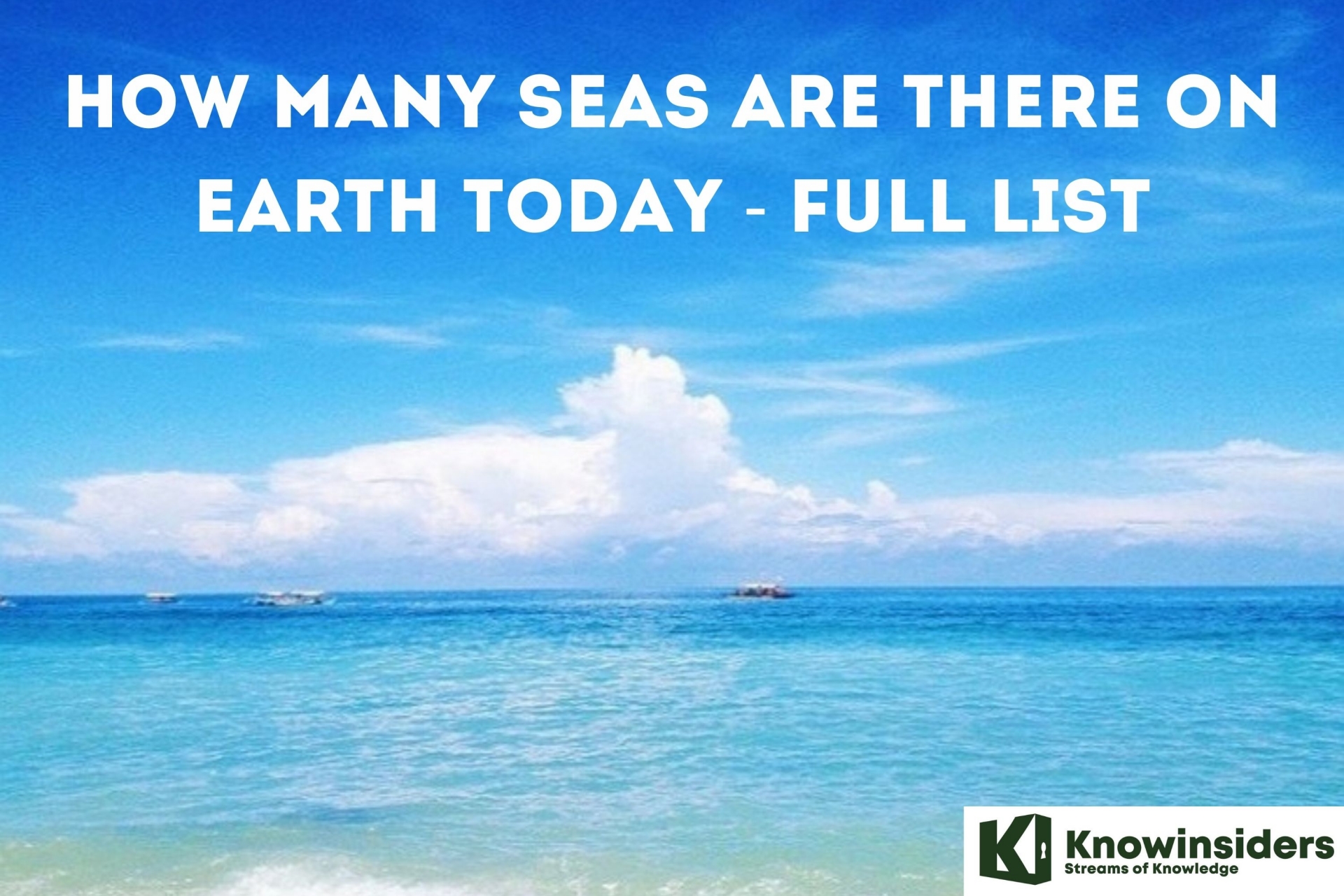 |
| How Many Seas Are There on Earth Today - Full List |
| Table of Content |
The majority of the Earth’s water is stored in its oceans, seas, and bays which make up 96.5% of the 1.36 billion tons of water.
People often use the term sea in reference to the ocean. To geographers, a sea is a division of the ocean that is enclosed or partly enclosed by land. For this reason, all seas are saline, or salty. Some seas are called bays (like the Bay of Bengal, between India, Bangladesh, Myanmar, and Indonesia), while some lakes are called seas (like the Caspian Sea, shared by Azerbaijan, Iran, Kazakhstan, Russia, and Turkmenistan).There are three major types of seas: nearly enclosed seas, partly enclosed seas, and hypersaline lakes.
What's the difference between an ocean and a sea?
There are five main oceans in the world. These are the Pacific, Indian, Arctic, Atlantic, and (more recently recognized as an ocean) the Southern (or Antarctic). But what defines these bodies of water as ‘oceans’?
In general, the water which covers the Earth is often referred to as the World Ocean, as the ocean makes up one global, interconnected body of saltwater.
A fundamental part of oceanography is the concept of one continuous body of salt water (which covers 70% of the Earth’s surface).
However, the World Ocean has been subdivided into five major oceans. The oceans are largely defined by the continents that frame them.
Pacific: This is the largest of the oceans that span between Australia, Asia, and the Americas. It meets the Atlantic Ocean at Cape Horn in South America.
Atlantic: The second largest of the oceans surrounds the Americas, Africa, and Europe. At Cape Agulhas in the south of Africa, the Atlantic Ocean meets the Indian Ocean.
Indian: This is the third largest of the oceans which surround India, the Arabain Peninsula, and Southeast Asia.
It also spans between West Africa and Eastern Australia, where it meets the Pacific Ocean near Australia.
Arctic: This is the smaller of the five, extends northward of the Atlantic ocean at Greenland and Iceland. It also joins the Pacific at the Bering Strait.
The Arctic Ocean surrounds the North Pole and touches North America, Siberia and Scandinavia. Depending on the season, the Arctic can partially be covered by ice.
Southern (Antarctic): This is a newly recognized ocean subdivision that surrounds Antarctica, and is the second smallest of the oceans. Like the Arctic Ocean, it is partially covered in ice depending on the time of year.
Often people confuse the terms ‘ocean’ and ‘sea’ when talking about the ocean. Typically seas are considered smaller bodies of water and are partially covered by land – often noted as to where the ocean meets the land.
Seas are defined as a “division of these waters, more or less definitely marked off by land boundaries.”
It also usually refers to the water surrounding smaller landmasses, as opposed to entire continents (which defines what the oceans are).
Are Seas Deeper than the Ocean?
Just like they are smaller in size, seas are generally much shallower than oceans. On average, the depth of the ocean is around 3,700 meters (only 10% of the Earth’s ocean floor has been mapped out so this is an estimated figure), but parts of it go much deeper.
For example, the Mariana Trench in the Pacific Ocean is the deepest known location on Earth at 11,034 meters.
The Caribbean Sea is considered the deepest sea in the world, and has a depth of 7,686 meters – significantly higher than the average depth of the ocean.
What are the Seven Seas?
The Sevens Seas is a historic term naming the dominant trade routes and regional bodies of waters. The definition of what those Seven Seas are has changed over time. The term is believed to have first appeared in 2,300 BCE Hymn 8 of the Sumerian Enheduanna to the goddess Inanna (Meador, 2001). The ancient Greeks named the seven seas as Aegean, Adriatic, Mediterranean, Black, Red, and Caspian seas, and the Persian Gulf.
While no longer a common phrase, the modern day Seven Seas are the Arctic, North Atlantic, South Atlantic, North Pacific, South Pacific, Indian, and Southern Oceans.
How Many Seas Are There in the World?
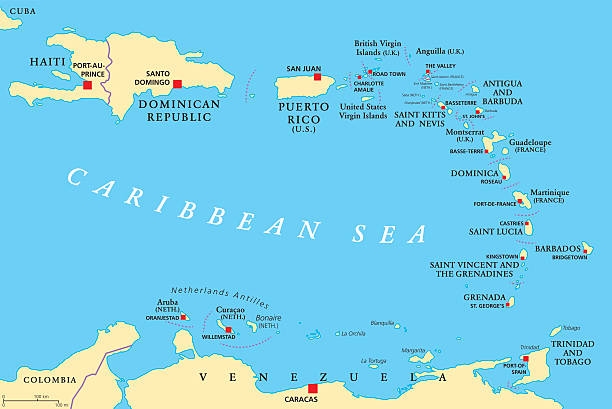 |
| Photo: istockphoto |
There are approximately 50 seas in the world. This assumes that the definition of a sea as a partially land-locked portion of the ocean is correct.
List of All Seas on The Earth
- Philippine Sea – 5.695 million km2
- Coral Sea – 4.791 million km2
- American Mediterranean Sea – 4.200 million km2
- Arabian Sea – 3.862 million km2
- Sargasso Sea – 3.5 million km2
- South China Sea – 3.5 million km2
- Weddell Sea – 2.8 million km2
- Caribbean Sea – 2.754 million km2
- Mediterranean Sea – 2.510 million km2
- Gulf of Guinea – 2.35 million km2
- Tasman Sea – 2.3 million km2
- Bay of Bengal – 2.172 million km2
- Bering Sea – 2 million km2
- Sea of Okhotsk – 1.583 million km2
- Gulf of Mexico – 1.550 million km2
- Gulf of Alaska – 1.533 million km2
- Barents Sea – 1.4 million km2
- Norwegian Sea – 1.383 million km2
- East China Sea – 1.249 million km2
- Hudson Bay – 1.23 million km2
- Greenland Sea – 1.205 million km2
- Somov Sea – 1.15 million km2
- Mar de Grau – 1.14 million km2
- Riiser-Larsen Sea – 1.138 million km2
- East Sea – 1.05 million km2
- Argentine Sea – 1 million km2
- East Siberian Sea – 987,000 km2
- Lazarev Sea – 929,000 km2
- Kara Sea – 926,000 km2
- Scotia Sea – 900,000 km2
- Labrador Sea – 841,000 km2
- Andaman Sea – 797,700 km2
- Laccadive Sea – 786,000 km2
- Irminger Sea – 780,000 km2
- Solomon Sea – 720,000 km2
- Mozambique Channel – 700,000 km2
- Cosmonauts Sea – 699,000 km2
- Banda Sea – 695,000 km2
- Baffin Bay – 689,000 km2
- Laptev Sea – 662,000 km2
- Arafura Sea – 650,000 km2
- Ross Sea – 637,000 km2
- Chukchi Sea – 620,000 km2
- Timor Sea – 610,000 km2
- North Sea – 575,000 km2
- Bellingshausen Sea – 487,000 km2
- Beaufort Sea – 476,000 km2
- Red Sea – 438,000 km2
- Black Sea – 436,000 km2
- Gulf of Aden – 410,000 km2
- Yellow Sea – 380,000 km2
- Baltic Sea – 377,000 km2
- Caspian Sea – 371,000 km2
- Libyan Sea – 350,000 km2
- Mawson Sea – 333,000 km2
- Levantine Sea – 320,000 km2
- Java Sea – 320,000 km2
- Gulf of Thailand – 320,000 km2
- Celtic Sea – 300,000 km2
- Gulf of Carpentaria – 300,000 km2
- Celebes Sea – 280,000 km2
- Tyrrhenian Sea – 275,000 km2
- Sulu Sea – 260,000 km2
- Cooperation Sea – 258,000 km2
- Persian Gulf – 251,000 km2
- Flores Sea – 240,000 km2
- Gulf of Saint Lawrence – 226,000 km2
- Bay of Biscay – 223,000 km2
- Aegean Sea – 214,000 km2
- Gulf of Anadyr – 200,000 km2
- Molucca Sea – 200,000 km2
- Oman Sea – 181,000 km2
- Ionian Sea – 169,000 km2
- Gulf of California – 160,000 km2
- Balearic Sea – 150,000 km2
- Adriatic Sea – 138,000 km2
Top 5 Largest Seas in the World
1. Mediterranean Sea
• Area: 1,144,800 square miles (2,965,800 sq km)
• Average depth: 4,688 feet (1,429 m)
• Ocean: Atlantic Ocean
The Mediterranean Sea loses more water by evaporation than it is fed by the rivers draining into it. Thus, it has a steady inflow from the Atlantic.
2. Caribbean Sea
• Area: 1,049,500 square miles (2,718,200 sq km)
• Average depth: 8,685 feet (2,647 m)
• Ocean: Atlantic Ocean
The Caribbean Sea averages eight hurricanes per year, with most happening in September; the season extends from June to November.
3. The South China Sea
• Area: 895,400 square miles (2,319,000 sq km)
• Average depth: 5,419 feet (1,652 m)
• Ocean: Pacific Ocean
Sediments in the South China Sea contain volcanic ash, both in deep and shallow waters, from various volcanic eruptions, including Krakatoa, which erupted in 1883.
4. Bering Sea
• Area: 884,900 square miles (2,291,900 sq km)
• Average depth: 5,075 feet (1,547 m)
• Ocean: Pacific Ocean
The Bering Straight's depths average only between 100 to 165 feet (30 to 50 m) but the Bering Sea's deepest point descends to 13,442 feet (4,097 m) in the Bowers Basin.
5. The Gulf of Mexico
• Area: 615,000 square miles (1,592,800 sq km)
• Average depth: 4,874 feet (1,486 m)
• Ocean: Atlantic Ocean
The Gulf of Mexico is the world's largest gulf, with 3,100 miles of shoreline (5,000 km). The Gulf Stream originates from there.
Related: How Many Countries Are There In Oceania?
Top 5 Smallest Seas on Earth
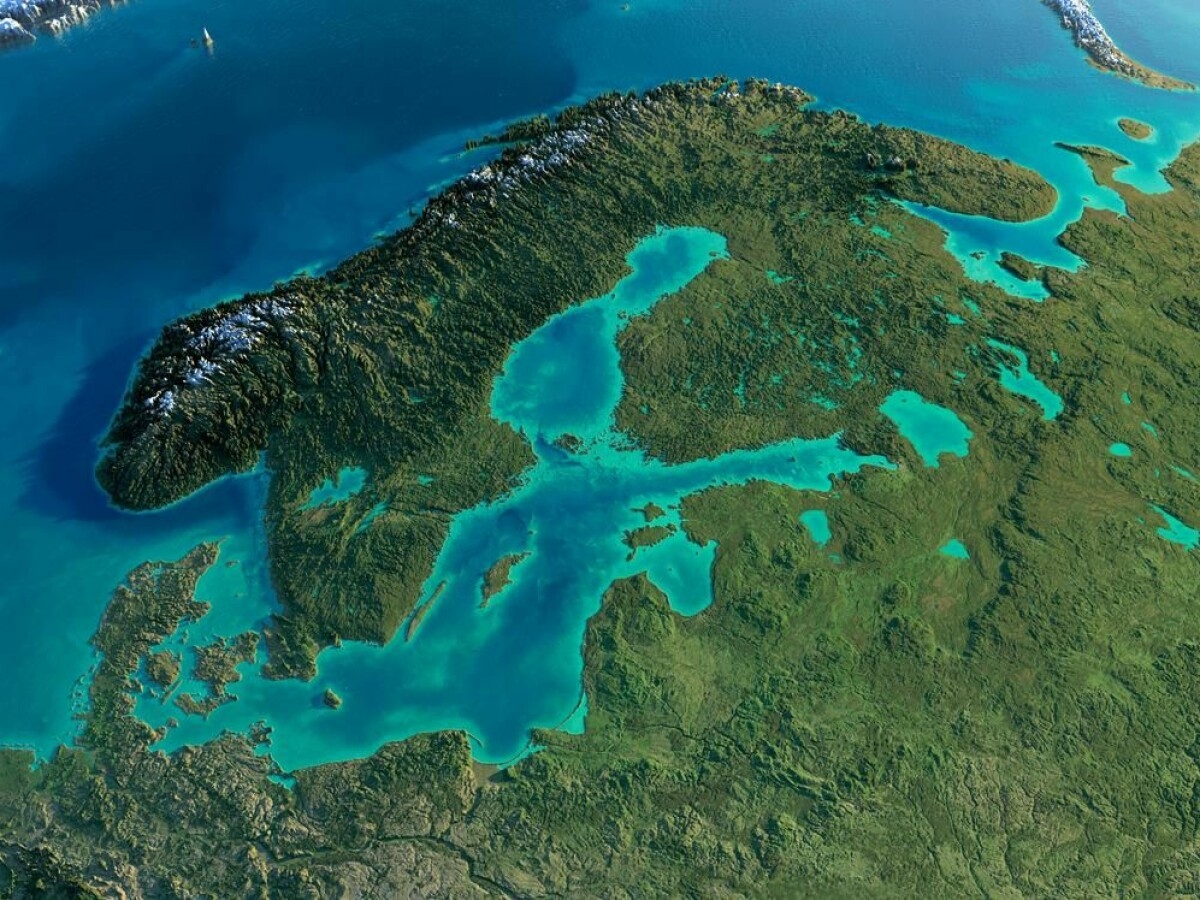 |
| Photo: sciencenordic |
1. Sea of Marmara
Which sea is actually the smallest on Earth is somewhat disputed. However, many people agree that the smallest sea is probably the Sea of Marmara in Turkey. This sea is about 7,053 square feet large. It is an inland sea and connects the Aegean Sea and the Black Sea. This sea forms many different gulfs along its edges and also boasts two large island chains.
2. Sea of Cortez
The second smallest sea on Earth is the Sea of Cortez, more commonly called the Gulf of California. This sea is about 62,000 square miles. It lies between Mexico and the Baja California Peninsula. The Gulf of California is known for its abundant and varied marine life, and is a favorite area of nature lovers.
3. Persian Gulf
Another small sea is the Persian Gulf, which is a small extension of the Indian Ocean. This sea lies between the Arabian Peninsula and Iran. It is about 97,000 square miles large. This sea once boasted a rich abundance of marine life. Unfortunately, over the years, many oil spills have damaged the area’s natural ecosystem.
4. Baltic Sea
The fourth-smallest sea on Earth is the Baltic Sea. This sea is about 146,000 square feet. It lies along the Scandinavian Peninsula in Northern Europe and is bordered by Poland, Russia, Sweden, and Finland. Several different bordering gulfs are occasionally considered to be part of this sea. For this reason, the Baltic Sea is sometimes considered to be slightly larger.
5. Yellow Sea
The Yellow Sea, which lies between China, Korea and Japan, is the Earth’s fifth smallest sea. This body of water is about 150,000 square miles in size. This sea is called the Yellow Sea because it can actually display a yellow or gold color. This color comes from sand particles that drift into the sea from the Gobi Desert.
Most Famous Seas in the World
1. The Mediterranean Sea
The Mediterranean Sea is an ancient body of water connected to the Atlantic Ocean. It is almost totally surrounded by land from 3 continents: Africa, Asia, and Europe. As one of the most significant seas in human history, it has promoted extensive trade and travel between various lands.
Nor is that all. The Mediterranean Sea is home to a diverse group of wildlife including several species of whales, dolphins, and porpoises. Loggerhead and green turtles make their home there as well as monk seals and an abundance of sharks and rays.
Perhaps most fascinating is what exists at the bottom of the Mediterranean Sea. This body of water lies in the Herodotus Basin, which contains the oldest stretch of seafloor known today. Most ocean floors are no older than 200 million years, the older parts having shifted down. But under the Mediterranean Sea is a portion of crust that is as old as 340 million years!
2. The Dead Sea
The Dead Sea is perhaps most famous for being one of the saltiest bodies of water in the world, so salty that virtually no organisms can live there. The salinity is so high that people can actually float in the water with no effort. This has inspired an intense tourist trade as people not only float in the sea but also use the abundant minerals to achieve a spa effect.
The Dead Sea has one more claim to fame: it is the lowest point on earth! It sits at 427 metres below sea level. It is totally landlocked, meaning it has no connection to any of the world’s oceans. For this reason, some people consider it a lake, not a sea.
Unfortunately, there are some concerns that the Dead Sea will eventually dry up. It has already gone down about 20 metres over the past century as humans have redirected some of its sources for irrigation and other purposes.
3. The Caribbean Sea
The Caribbean Sea is one of the world’s largest seas with an area of approximately 1,063,000 square miles. It connects to the Atlantic Ocean and lies between North America and South America. It is most famous for its astonishingly blue waters, which host an incredible variety of sea life. This is due in part to the Mesoamerican Barrier Reef, the second-largest reef in the world. The reef hugs the coastlines of Mexico, Belize, Guatemala, and Honduras for 620 miles.
The Caribbean Sea hosts a variety of baleen and toothed whales as well as sharks like the hammerhead, black tip, and leopard sharks. Jellyfish, sting rays, and turtles are common residents along with conches and mollusks. The sea and its reef are also home to many fish such as barracuda, sturgeon, and damselfish.
Pollution of the Seas Now
As with other bodies of water around the world, the seas are facing an environmental crisis. Pollution has reached a critical point with many seas suffering an inflow of plastics, toxic metal compounds, and dangerous chemicals.
The Baltic Sea is perhaps the most notorious example. Some environmentalists call it the most polluted sea in the world. It is fed by a number of rivers like the Neva, Vistula, and Daugava that carry industrial pollutants from urban regions. Additionally, in past Russia has dumped nuclear waste into the Baltic Sea. The waste remains radioactive to this day. As if all that wasn’t enough, drug and hormone residues have caused sterility in many of the fish.
Seas contain some of the world’s most beautiful and abundant wildlife, and it is vital to preserving them far into the future.
Are Seas Salty?Yes, all seas contain salt water, even the ones that are landlocked like the Caspian Sea, Dead Sea, and Aral Sea. Rivers flow into these seas where the salts in rocks dissolve into the water. This is what gives the water its briny quality. Usually, seas and oceans mix, sharing much of their marine life. Some may consider the Sea of Galilee to be an exception to this rule as it contains fresh water. However, the Sea of Galilee is not a sea at all. It is Israel’s largest freshwater lake, occupying an area of about 64 square miles. |
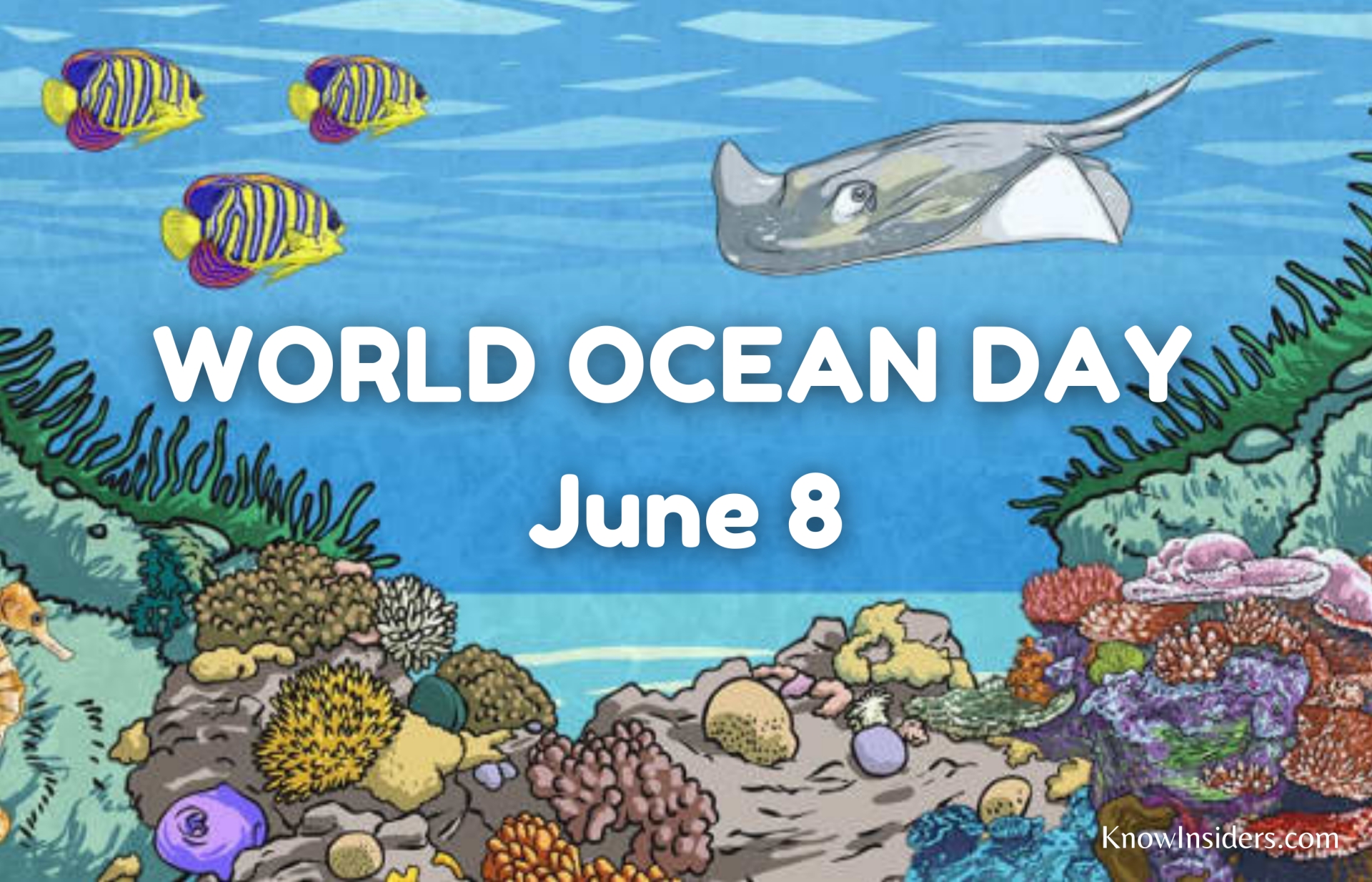 World Oceans Day: Great Quotes, History, Significanc and Theme World Oceans Day: Great Quotes, History, Significanc and Theme World Oceans Day is celebrated on 8 June every year to empower people of all ages to become leaders of their own and stop polluting ... |
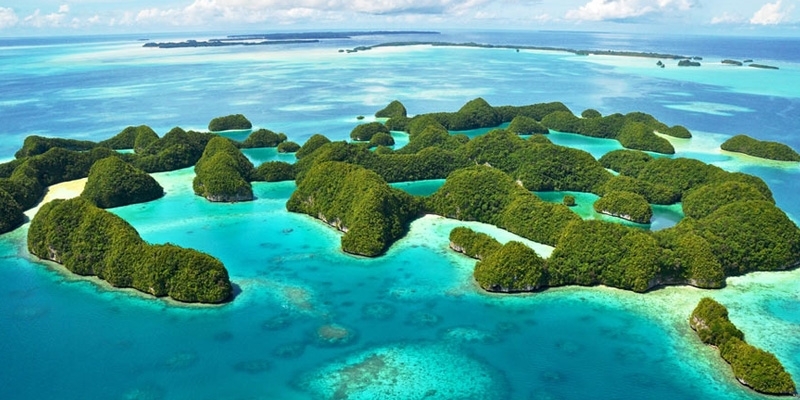 How Many Countries Are There In Oceania? How Many Countries Are There In Oceania? Do you know how many countries the Oceania has? What are the names of the countries? |























